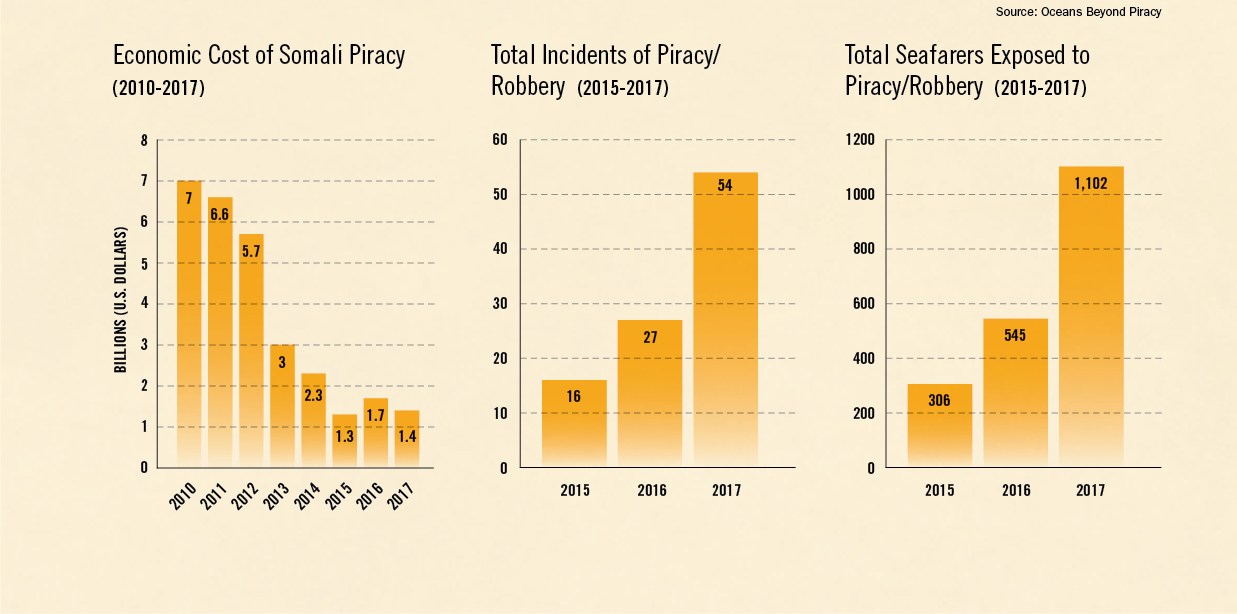Although piracy is not new to East Africa, the seeds of modern piracy were sown off the coast of Somalia after the collapse of the national government in 1991. With no navy to patrol the Gulf of Aden, Somali waters became vulnerable to international fishing vessels, which plundered fish stocks and were accused by locals of dumping toxic waste into the ocean.
A 2009 Time magazine report indicated that piracy rose in response to indiscriminant foreign trawling, which took plentiful mackerel, sardines and tuna from the ocean at a pace that “would virtually empty the world’s oceanic stocks by 2050,” quoting a 2006 study in the journal Science. As Somali piracy ramped up, outlaws could capture vessels and count on a quick ransom because shipping companies didn’t want to draw attention to fishing practices.
In 2003, Southeast Asia — notably the area around the Strait of Malacca — still was the prime location for maritime piracy. It was not until 2007 that piracy incidents in East Africa surpassed Asian totals. A year later, East and West African piracy incidents each doubled those in Southeast Asia, according to The Hague Center for Strategic Studies Piracy Database.
Somali pirates typically attacked vessels using either dinghies or larger boats called “mother ships.” Ships were boarded and directed back to mainland Somalia, where pirates would issue ransom demands for crew members and craft.
After gaining international attention in 2008, Somali piracy peaked around 2010 and 2011, but the number of attacks plunged soon after. Three international naval patrol efforts, in addition to security efforts by private shipping companies, began to stave off piracy in the Red Sea, Gulf of Aden and beyond. By 2015, the total number of incidents had dropped to 16 from a high of 239 in 2011.
However, in 2016, the number of incidents increased 69 percent to 27, and then by 100 percent a year later to 54, according to OBP. The spike in incidents, which includes failed attacks, hijackings, kidnappings and suspicious activity, can be attributed to a few things. First, continuing conflict in Yemen, which is across the Gulf of Aden from Somalia, adds to instability in the region. Second, international naval coalitions have scaled back presence in the gulf and Red Sea. NATO ended Operation Ocean Shield in December 2016. Independent deployers, not coalition forces, were the main naval presence in the region, and both had reduced their time patrolling. Finally, pirate groups retain the intent, ability and opportunity to launch attacks.


Comments are closed.